How Your Kitchen Holding You Back…
Are you tired of feeling frustrated every time you step into your kitchen? If your current space leaves you uninspired or makes meal prep a chore, you’re not alone. Many homeowners dream of a kitchen that’s both beautiful and functional—a true heart of the home where cooking, entertaining, and daily life come together with ease. A kitchen remodel can be the key to unlocking that dream kitchen, transforming your outdated space into a hub of creativity and comfort. With thoughtful kitchen remodeling, you can create a functional space that not only meets your needs but also sparks joy every time you walk in. Whether you’re looking for inspiration to start your kitchen renovation or simply want to make cooking more enjoyable, this article will guide you through the benefits of remodeling and help you envision the kitchen you’ve always wanted.
Assessing Your Current Kitchen: Is It Time for a Change?
Take a moment to really look at your kitchen. Does it feel like a space you enjoy, or is it a source of daily frustration? If your kitchen is cramped, lacks countertop space, or is filled with outdated appliances, it might be time to consider a kitchen remodel. Outdated kitchens not only make cooking and entertaining less enjoyable, but they can also turn off potential buyers if you ever decide to sell your home. Old appliances can even pose health hazards, making a kitchen renovation not just a matter of style, but of safety and functionality. By evaluating your current kitchen layout, storage, and overall comfort, you can pinpoint exactly what needs to change. A well-planned remodel can help you create a kitchen that’s tailored to your lifestyle, with plenty of countertop space, a functional layout, and modern appliances that make every day easier. Start by identifying what’s not working—then imagine how a new kitchen could transform your space and your life.
Key Takeaways
- Poor kitchen layouts waste time and create daily frustration during cooking tasks
- Outdated kitchens with worn cabinets and old appliances can decrease your home’s value by up to 15%
- Storage issues and cluttered countertops indicate your kitchen lacks modern organizational features
- Hidden moisture damage and unusual odors signal serious structural problems requiring immediate attention
- Energy-inefficient appliances from before 2010 can increase your monthly utility bills by $50-100
Every morning, you walk into your kitchen hoping today will be different. Maybe you won’t bump into the refrigerator door while trying to reach the stove. Perhaps you’ll finally find counter space to prep your morning coffee without moving five small appliances. But deep down, you know the truth – your kitchen is working against you, not with you.
Research shows that 40% of people who feel generally positive about their home also experience improved mental health. Your kitchen, as the heart of your house, plays a crucial role in this dynamic. When this essential room becomes a source of daily stress rather than joy, it’s time to ask yourself: is your kitchen secretly making you miserable?
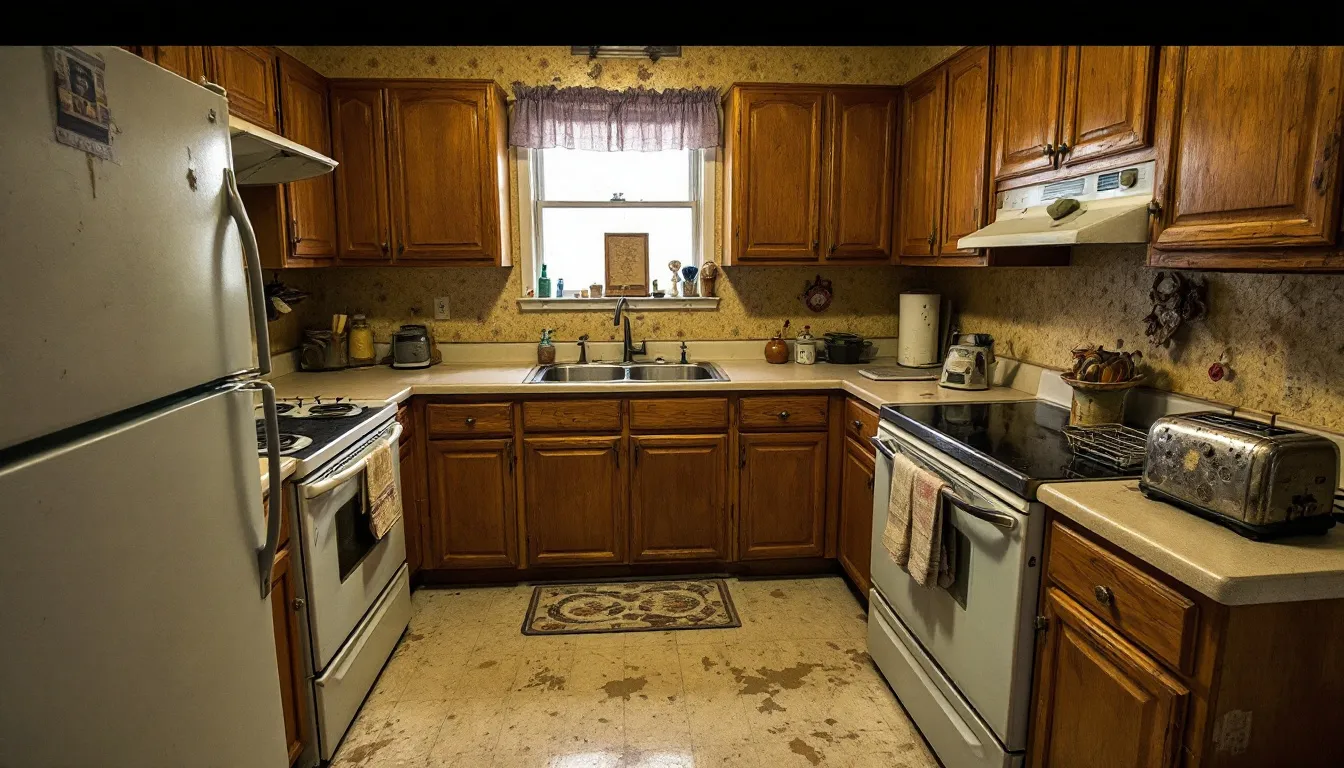
The signs aren’t always obvious. You might blame your cooking skills or convince yourself that all kitchens have these problems. But after helping tens of thousands of homeowners transform their spaces, kitchen design experts have identified five clear indicators that your kitchen needs more than a fresh coat of paint – it needs you to remodel your kitchen from the ground up.
Most homeowners wait too long to address these issues, thinking they can live with the frustration or that kitchen remodeling costs too much money. Many fear it will be an expensive project, but delaying can make things worse. The reality? Ignoring these warning signs often leads to wasting money on repeated repairs, decreased home value, and years of unnecessary stress. An older house with a dysfunctional kitchen can lose significant resale value, making it harder to attract potential buyers when it’s time to sell.
Let’s examine the five signs that indicate your kitchen renovation can’t wait any longer.
Sign 1: Your Kitchen Layout Works Against You Every Day
Poor kitchen design creates friction in your daily life, turning simple cooking tasks into frustrating obstacles. If you find yourself constantly fighting your kitchen layout, you’re experiencing one of the clearest signs that remodeling makes sense. The kitchen is one of the most important rooms in the house, and it should be designed to support contemporary lifestyles with modern conveniences and optimal functionality.
The foundation of any functional space starts with efficient workflow patterns. Kitchen design experts use the classic “work triangle” principle – the distance between your sink, stove, and refrigerator should total no more than 26 feet, with each leg measuring between 4 and 9 feet. Walking more than 15 feet between these main work areas creates inefficient patterns that waste both time and energy during meal prep.
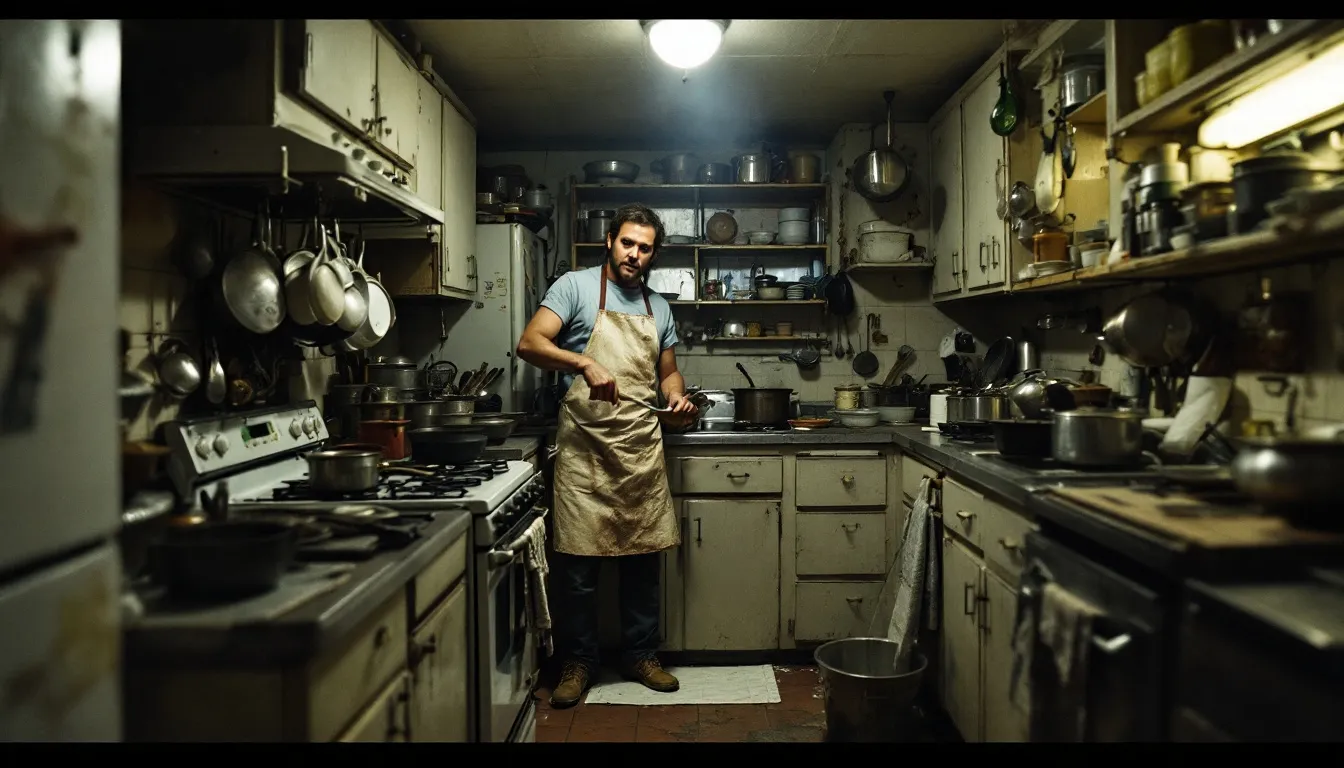
Modern families face additional challenges when multiple people need to cook simultaneously. In older homes, narrow galley kitchens or cramped layouts force family members to constantly bump into each other. When cabinet doors and appliance doors block pathways or collide when opened together, your kitchen design is fundamentally flawed.
Consider these common layout problems:
- Your refrigerator door blocks access to counters or certain cabinets when opened
- The stove sits directly across from the sink, creating a dangerous pathway between hot surfaces and water
- No clear zones exist for different activities like coffee preparation, homework, or meal prep
- Appliance placement forces awkward movements, like reaching across a hot stove to access storage
The cost of living with poor layout extends beyond daily frustration. Inefficient kitchens discourage home cooking, leading families to spend more money on takeout and restaurant meals. When your space doesn’t support healthy meal preparation, your family’s nutrition and budget both suffer.
Modern kitchen designs prioritize workflow by creating distinct zones for different activities. Islands and peninsulas provide additional prep space while maintaining clear traffic patterns. Professional designers consider how families actually use their kitchens, accommodating everything from quick breakfast routines to elaborate holiday cooking.
Sign 2: You’re Embarrassed to Have Guests See Your Kitchen
Your kitchen’s appearance directly impacts your confidence as a host and your home’s value. When outdated surfaces, broken fixtures, and worn appliances make you cringe every time guests visit, it’s a clear signal that your space needs professional attention.
Laminate countertops from the 1980s and 1990s show their age through chips, cracks, and permanent stains that no amount of cleaning can remove. These surfaces not only look dated but can harbor bacteria in damaged areas, creating potential health hazards. Similarly, cabinet doors that won’t close properly due to broken hinges or warped wood create an unprofessional appearance that screams “neglect” to visitors.
Appliances tell their own story about your kitchen’s condition. Refrigerators with dents, dishwashers with rust stains, or ranges with mismatched colors create a patchwork appearance that undermines your entire kitchen design. When older appliances show visible wear and tear, they signal to potential buyers that major replacements will be necessary soon.
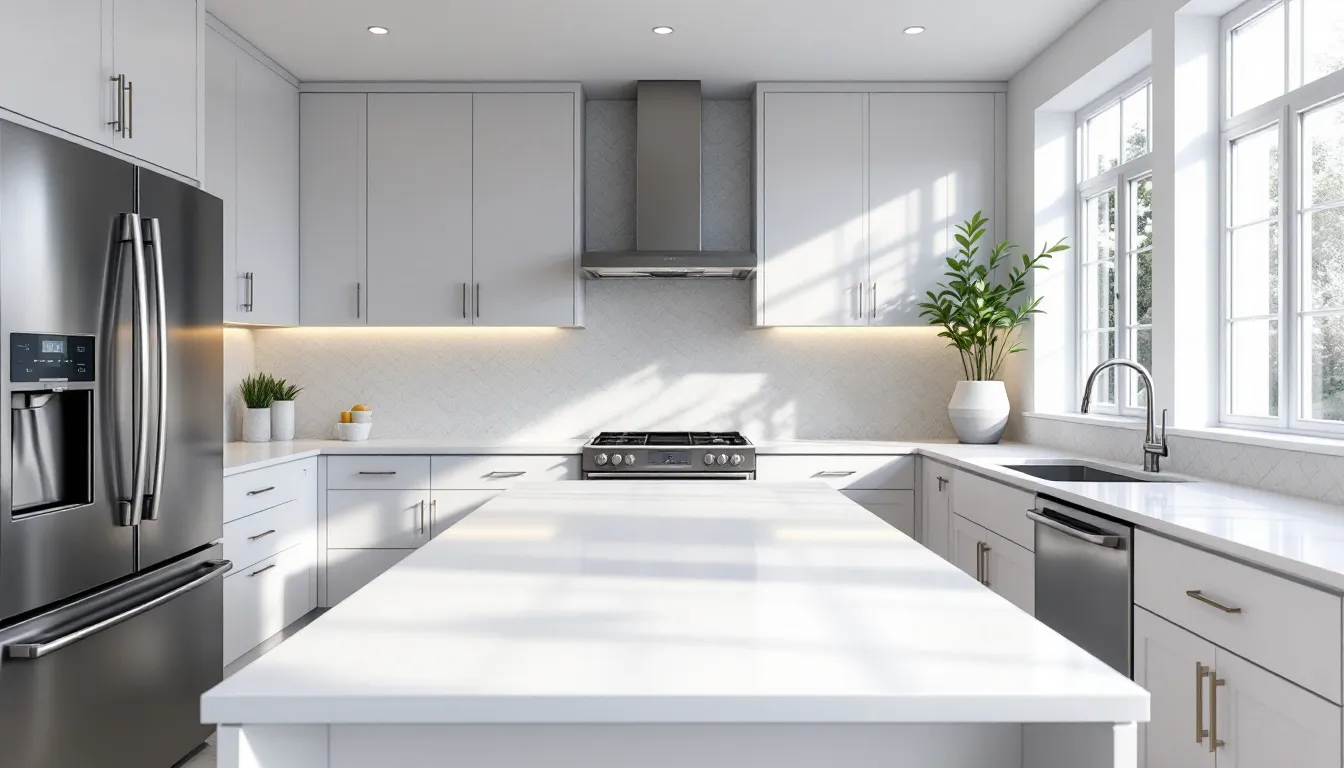
Backsplashes often reveal the most telling signs of neglect. Grout stains that won’t come clean, missing tiles, or outdated patterns from decades past instantly date your kitchen. These cosmetic issues seem minor individually, but together they create an overwhelming impression of a space that hasn’t received proper maintenance.
Lighting plays a crucial role in how your kitchen appears to others. Dim, yellowing fluorescent fixtures or inadequate task lighting make food preparation difficult and create an unwelcoming atmosphere. Poor lighting can make even clean, organized kitchens appear dingy and uninviting.
The financial impact of an embarrassing kitchen extends far beyond hurt feelings. Real estate experts consistently report that outdated kitchens decrease home value significantly. Potential buyers often reduce their offers by $15,000 to $30,000 when they see a kitchen that requires immediate updating. In competitive markets, homes with dated kitchens sit on the market longer while similar properties with updated spaces sell quickly.
Professional kitchen renovations focus on creating timeless appeal that welcomes both daily family use and special entertaining. Updated countertops, cabinet refacing or replacement, and modern appliances create a cohesive look that enhances your home’s overall value and your personal confidence.
Sign 3: Your Countertops Are Permanently Covered With Stuff
When every inch of your countertop space stays occupied by small appliances, mail, dishes, and random household items, your kitchen suffers from fundamental storage problems that indicate poor design rather than poor habits.
Modern kitchens require significantly more storage than older homes provide. A toaster oven, coffee maker, stand mixer, and blender can easily overwhelm limited counter space, leaving no room for actual food preparation. When these appliances live permanently on your counters because your cabinets can’t accommodate them, your kitchen design has failed to meet your family’s real needs.
The problem often starts with shallow cabinets typical of older house construction. Standard cabinets from previous decades measure only 12 inches deep, while modern cookware, appliances, and storage containers require 15-24 inches of depth. This mismatch forces homeowners to store items on countertops simply because nothing fits properly in the available storage.
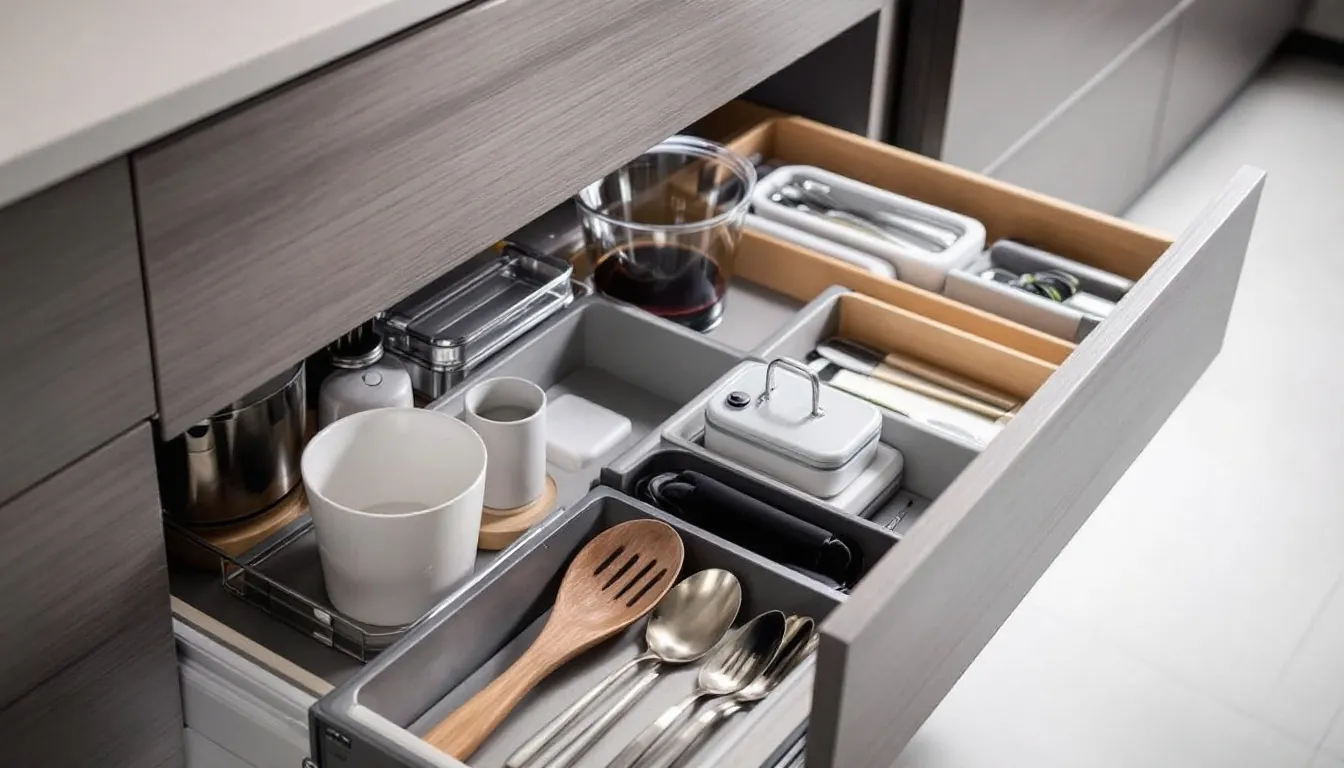
Corner cabinets present another common storage challenge. Without lazy Susans or pull-out shelves, these spaces become black holes where items disappear and remain inaccessible. Many homeowners avoid using corner cabinets entirely, further reducing their effective storage capacity.
Pantry storage often proves inadequate in older kitchens, forcing dry goods, canned items, and bulk purchases onto valuable counter space. When cereal boxes, pasta containers, and snack foods crowd your prep areas, cooking becomes a constant battle to find working room.
The absence of designated zones compounds storage problems. Without specific areas for coffee stations, charging devices, or homework materials, these daily necessities spread across available surfaces. Your countertops become catch-alls for everything from car keys to school papers.
Professional storage solutions transform cramped, cluttered kitchens into functional spaces. Soft-close drawers with custom organizers maximize accessibility while protecting contents. Pull-out shelves in lower cabinets eliminate the need to crawl on hands and knees to reach items. Tall pantry units with adjustable shelving accommodate everything from small spice containers to large appliances.
Modern kitchen designs incorporate strategic storage planning that considers your family’s specific needs. Islands provide additional storage while creating natural zones for different activities. Well-planned storage allows you to maintain clear countertops for actual cooking, transforming your kitchen from a storage room back into a functional workspace.
Sign 4: Strange Smells and Hidden Damage Are Lurking
Unusual odors and subtle signs of moisture damage often signal serious structural problems that require immediate attention, not cosmetic fixes. These issues typically worsen over time, leading to expensive repairs that far exceed the cost of proactive remodeling.
Musty smells near your sink often indicate water damage behind cabinets or within walls. Moisture can also penetrate drywall, leading to insulation problems and potential mold growth. This moisture creates perfect conditions for mold growth, which poses serious health risks to your family. Prolonged exposure to mold can trigger respiratory problems, allergies, and other health issues, particularly in children and individuals with compromised immune systems.
Physical signs of moisture damage appear gradually but require urgent attention:
- A soft spot in flooring around dishwashers, refrigerators, or sinks
- Discolored walls or ceiling stains suggesting hidden plumbing leaks
- Warped cabinet doors and drawers that no longer close properly
- Peeling paint or wallpaper in areas exposed to cooking moisture
- Black spots or fuzzy growth in corners where old caulking has failed
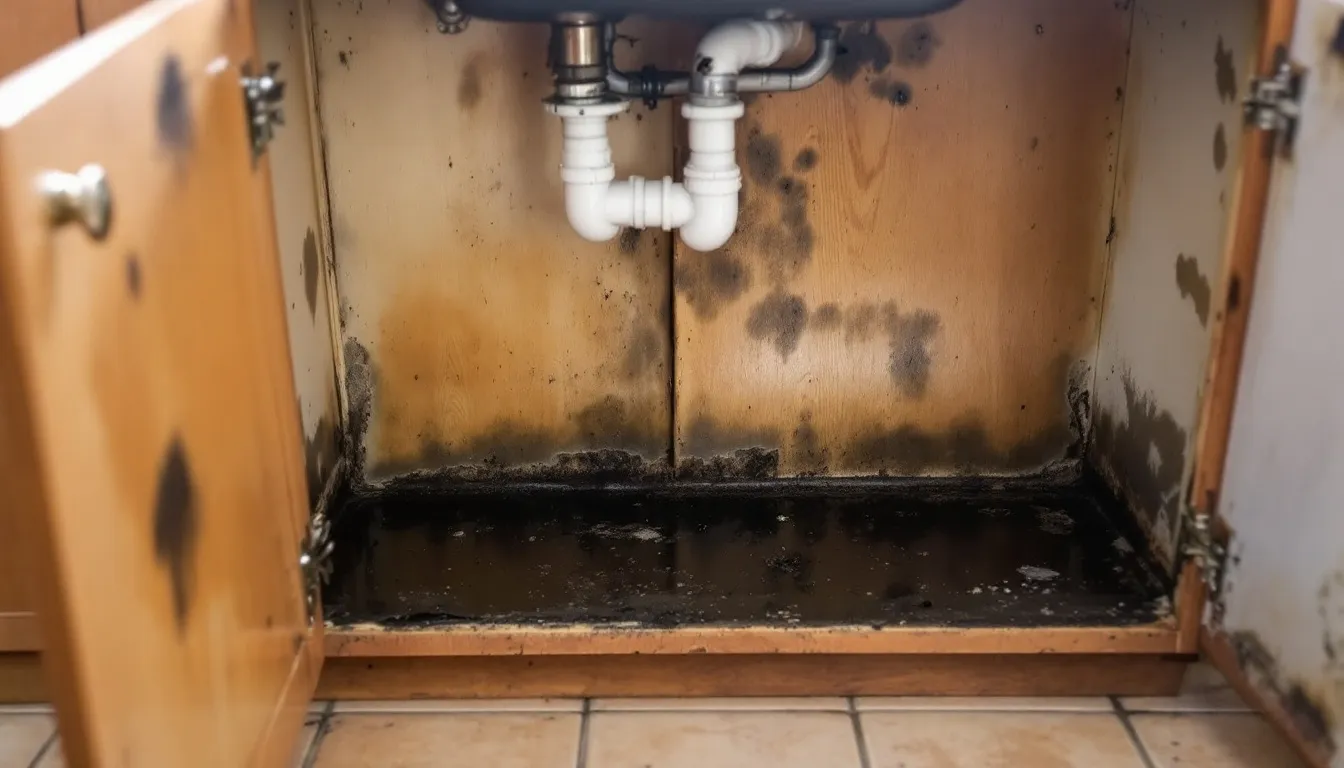
The kitchen’s high-moisture environment accelerates damage when proper ventilation and water-resistant materials aren’t present. Cooking activities generate significant humidity, while dishwashing and cleaning add additional moisture. Without adequate exhaust fans and proper sealing, this moisture penetrates surfaces and creates long-term structural problems.
Older homes often lack the moisture barriers and ventilation systems standard in modern construction. Original caulking around sinks and tubs deteriorates over time, allowing water to seep behind surfaces. Once moisture enters wall cavities or subfloors, it creates ideal conditions for rot and mold that can spread throughout your home’s structure.
The financial implications of ignoring moisture damage compound rapidly. What starts as a small leak can destroy flooring, cabinets, and even structural framing if left unaddressed. Many homeowners discover that avoiding the signs of moisture damage ultimately costs tens of thousands more than addressing problems early through comprehensive remodeling.
Modern kitchen materials and construction techniques prevent future moisture issues. Proper waterproofing behind sinks and dishwashers, upgraded ventilation systems, and moisture-resistant materials protect your investment while ensuring your family’s health and safety.
Professional kitchen renovations include moisture assessment and remediation as fundamental steps. Addressing underlying problems during remodeling prevents future damage while creating a healthier environment for your family.
Sign 5: Your Energy Bills Keep Rising While Your Kitchen Stays Uncomfortable
Rising utility costs often trace directly to energy-inefficient appliances and poor insulation in older kitchens. When your monthly bills continue climbing while your kitchen remains uncomfortable during cooking, energy bills can get sky high due to outdated systems and inefficiency. Outdated systems are literally wasting money every day.
Refrigerators manufactured before 2010 consume approximately 40% more energy than current Energy Star models. A 15-year-old refrigerator can add $50-75 monthly to your electricity bill compared to modern alternatives. Multiply this across multiple outdated appliances, and the annual waste reaches $300-500 or more.
Old dishwashers compound the problem by using 6-10 gallons of water per cycle, while efficient models operate with just 3-4 gallons. Beyond water waste, older dishwashers require hotter water temperatures to clean effectively, increasing your water heating costs significantly.
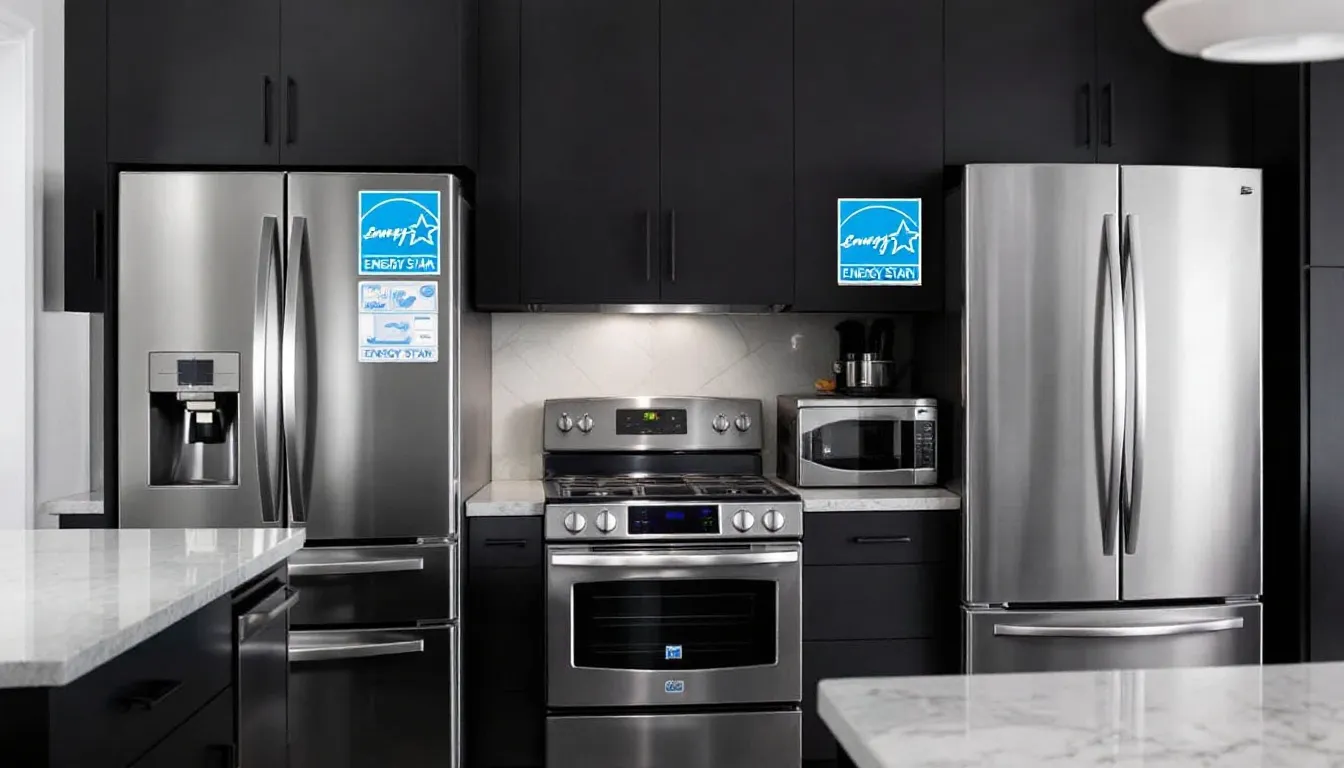
Lighting throughout older kitchens typically relies on incandescent bulbs or outdated fluorescent fixtures that consume far more electricity than LED alternatives. Switching to LED lighting can reduce kitchen lighting costs by 75% while providing better illumination for cooking tasks.
Poor insulation around kitchen windows and exterior walls creates temperature control challenges that force your heating and cooling systems to work harder. During summer cooking, inadequate ventilation allows heat and humidity to build up, making your air conditioning system struggle to maintain comfortable temperatures throughout your home.
Inadequate ventilation affects more than comfort – it impacts indoor air quality and energy efficiency. Cooking odors, grease particles, and humidity linger when exhaust systems can’t effectively remove them. This forces your HVAC system to work harder while creating an unpleasant environment for cooking and entertaining.
The cumulative effect of energy inefficiency extends beyond monthly utility bills. Older appliances require more frequent repairs as components wear out, and replacement parts become increasingly expensive and difficult to find. Many homeowners discover they’re spending more on repairs than new appliances would cost.
Modern kitchen designs prioritize energy efficiency through strategic planning and upgraded systems. Energy Star appliances provide superior performance while reducing operating costs. Homeowners should invest in high-quality, energy-efficient appliances and insulation to ensure long-term savings, comfort, and increased resale value.
Professional energy assessments during kitchen planning identify specific inefficiencies and quantify potential savings. Many utility companies offer rebates for energy-efficient appliances and lighting, helping offset remodeling costs while reducing long-term operating expenses.
Creating Your Dream Kitchen: Imagine the Possibilities
Picture yourself walking into a kitchen that’s designed just for you—a space with sleek cabinets, spacious countertops, and the latest appliances, all arranged to improve functionality and make cooking a pleasure. With a kitchen renovation, you have the opportunity to create a room that reflects your personal style and supports your daily routines. Think about adding certain cabinets for better storage, upgrading your flooring for comfort and durability, or choosing new appliances that make meal prep a breeze. Whether you want to maximize storage, create more prep space, or simply update the look and feel of your kitchen, a remodel gives you the freedom to design a space that truly works for you. Explore different kitchen designs and materials for inspiration, and don’t be afraid to dream big—your ideal kitchen is within reach, and every upgrade brings you closer to a space where you’ll love to cook, entertain, and spend time with family.
The True Cost of Waiting
Delaying necessary kitchen remodeling often costs significantly more than addressing problems proactively. The issues that make your kitchen miserable rarely improve on their own – instead, they typically worsen over time, creating larger problems that require more expensive solutions.
Moisture damage accelerates exponentially once it begins. A small leak that could be fixed during routine remodeling can destroy flooring, cabinets, and structural framing if left unaddressed. What starts as a $5,000 repair project can balloon into tens of thousands when extensive structural damage requires remediation.
Outdated appliances become increasingly expensive to maintain as manufacturers discontinue parts and service becomes scarce. The refrigerator that breaks down next year might cost $800 to repair with hard-to-find components, while a new energy-efficient model provides better performance for $1,200.
The psychological cost of daily frustration affects your family’s quality of life in ways that extend far beyond the kitchen. When meal preparation becomes a source of stress rather than enjoyment, family dynamics suffer. Children avoid helping with cooking, couples argue about kitchen tasks, and home entertaining becomes rare.

Property values in your neighborhood continue rising while your outdated kitchen holds your home’s value back. Every year you delay remodeling, the gap widens between your home’s potential value and its current market appeal. In competitive real estate markets, this difference can mean missing years of appreciation while neighboring properties with updated kitchens gain value.
Missing the opportunity to enjoy your investment represents another hidden cost. Many homeowners spend years frustrated with their kitchen, finally remodel when they’re ready to sell, then enjoy the space for only a brief period before moving. Starting your kitchen renovation sooner allows your family to benefit from the improved functionality and comfort for years rather than months.
Professional kitchen designers consistently report that homeowners’ biggest regret is waiting too long to remodel. The sooner you address the signs that your kitchen is making you miserable, the sooner you can begin enjoying the space that should serve as your home’s heart.
When to Call a Professional
Determining the scope of necessary changes requires professional expertise to ensure your kitchen remodel addresses underlying problems rather than just cosmetic concerns. While some homeowners attempt DIY solutions, structural layout changes, electrical upgrades, and plumbing modifications typically require licensed professionals and proper permits.
Layout changes that involve moving walls, especially load-bearing structures, require structural engineers and professional contractors. These modifications affect your home’s integrity and must comply with local building codes. Professional designers understand how to maximize space while maintaining structural safety and code compliance.
Electrical upgrades for modern appliances often exceed DIY capabilities. Today’s kitchens require significantly more electrical capacity than older homes provide. Adding circuits for dishwashers, garbage disposals, microwaves, and other appliances requires licensed electricians who understand current code requirements and safety standards.
Plumbing modifications for islands, relocated sinks, or additional water lines require permits and professional installation. Improper plumbing work can cause expensive water damage, while permit violations can complicate future home sales. Professional plumbers ensure proper installation while handling necessary inspections.
Complex projects involving multiple trades require professional coordination to prevent costly mistakes and delays. Kitchen remodeling involves electrical, plumbing, flooring, cabinetry, and finish work that must be sequenced properly. Professional contractors manage these relationships while ensuring quality workmanship throughout the project.
Timeline expectations vary based on project scope, but full kitchen remodels typically require 6-8 weeks from demolition to completion. Professional project management ensures work progresses efficiently while minimizing disruption to your daily life. Many contractors can help you set up temporary kitchen facilities to maintain some cooking capability during construction.
Professional designers prevent expensive mistakes by creating detailed plans that address both current problems and future needs. Their experience with similar projects helps identify potential issues before they become costly surprises. The investment in professional design often saves money by avoiding change orders and ensuring efficient use of materials and labor.
FAQ
How much does a kitchen remodel typically cost in 2024?
Mid-range kitchen remodels average $75,000-$85,000 for a 200 square foot space. High-end remodels can reach $150,000-$200,000 with premium materials and appliances. Budget-friendly updates focusing on cabinets and countertops range from $25,000-$40,000. Return on investment typically ranges from 60-80% at resale depending on local market conditions.
Can I live in my home during a kitchen remodel?
Most families can stay in their homes during kitchen remodeling projects. Set up a temporary kitchen in another room with microwave, coffee maker, and mini-fridge. Plan for 2-3 weeks without running water in the kitchen during plumbing work. Dust protection barriers help contain construction debris from spreading throughout the house. Consider staying with family for 3-5 days during the most disruptive phases.
What kitchen improvements offer the best return on investment?
Cabinet refacing or replacement typically recoups 75-85% of costs at resale. Countertop upgrades to quartz or granite return 65-75% of investment. Energy-efficient appliance packages return 60-70% while reducing monthly utility costs. Adding kitchen islands increases functionality and typically returns 70-80% of investment. Minor remodels focusing on cabinet painting and hardware updates return 80-90%.
How do I know if my kitchen layout can be improved?
Time yourself walking between sink, stove, and refrigerator – efficient layouts keep this under 20 feet total. Observe traffic patterns during meal preparation – people shouldn’t have to weave around each other. Count how many cabinet doors must open to access basic cooking items. Notice if you consistently run out of counter space during food preparation. Professional kitchen designers can assess workflow and suggest layout improvements during consultations.
Should I remodel my kitchen before selling my home?
Updated kitchens help homes sell 20-30% faster than properties with outdated kitchens. Buyers often reduce offers by $15,000-$30,000 if they expect to remodel immediately. Focus on neutral colors and timeless designs that appeal to the broadest buyer pool. Minor updates like cabinet painting, new hardware, and modern lighting offer good returns without major investment. Consult local real estate agents about kitchen expectations in your specific market and price range.
Conclusion: Transform Misery into Joy—Your New Kitchen Awaits
Investing in a kitchen remodel is more than just updating a room—it’s about transforming your daily life. A well-executed kitchen renovation can turn an outdated, frustrating space into a functional and beautiful kitchen that inspires creativity and brings your family together. Imagine starting each day in a kitchen that energizes you, where cooking feels effortless and every detail is designed for your comfort. Don’t let another year go by feeling stuck in a kitchen that doesn’t serve you. Take the first step toward your dream kitchen and create a space that enhances your life, supports your routines, and adds value to your home. Reach out to a professional kitchen remodeler today and start planning the kitchen you’ve always wanted—a space where joy, functionality, and style come together for years to come.
